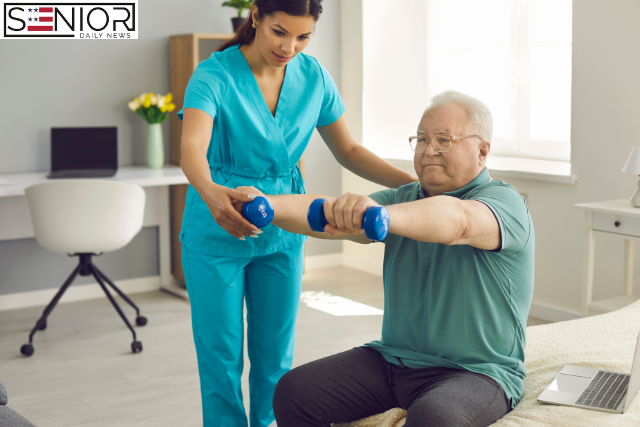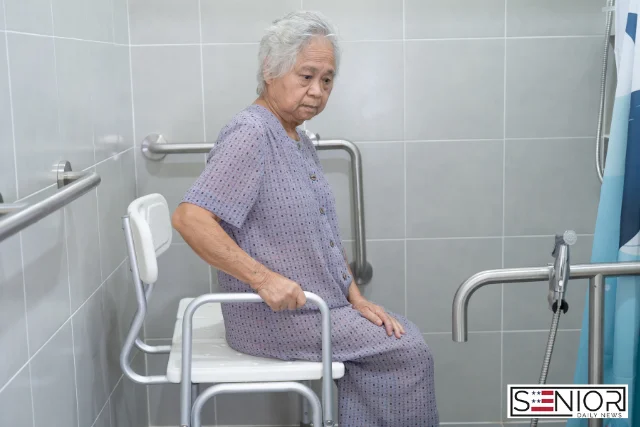Stroke Recovery Tips for Family Caregivers

Caring for a senior loved one after a stroke is a journey filled with emotional, physical, and practical challenges. In the United States, strokes are alarmingly common, with nearly 795,000 people experiencing a stroke each year, according to the Centers for Disease Control and Prevention (CDC). Of these, about 610,000 are first-time strokes. These figures underscore the importance of understanding stroke recovery and providing compassionate, informed care to help seniors regain their independence and quality of life.
Understanding Stroke and Its Impact
A stroke occurs when the blood supply to part of the brain is interrupted or reduced, preventing brain tissue from getting oxygen and nutrients. Within minutes, brain cells begin to die. There are two primary types of strokes: ischemic (caused by blockages) and hemorrhagic (caused by bleeding). The effects of a stroke can vary significantly depending on its severity and location in the brain. Common consequences include paralysis, speech and language issues, cognitive deficits, emotional changes, and mobility challenges.
The Critical Role of a Caregiver
As a caregiver, your role is pivotal. Not only do you provide physical assistance, but you also offer emotional support, encouragement, and motivation. Here are some essential aspects of post-stroke caregiving:
- Understanding the Rehabilitation Process
- Stroke recovery often involves various therapies such as physical therapy, occupational therapy, and speech-language pathology.
- Progress can be slow, requiring patience and consistent encouragement.
- Assisting with Daily Activities
- Help your loved one with tasks like dressing, bathing, and eating.
- Encourage participation in these activities to foster independence.
- Managing Medications and Appointments
- Ensure medications are taken as prescribed to prevent another stroke.
- Keep track of medical appointments and rehabilitation sessions.
- Providing Emotional Support
- Depression and frustration are common after a stroke.
- Listen actively and engage in positive conversations to boost their morale.
Creating a Safe and Supportive Environment
Home modifications are crucial to ensure safety and accessibility. Consider these adjustments:
- Install grab bars in bathrooms and near beds.
- Remove tripping hazards like loose rugs and clutter.
- Use non-slip mats and adequate lighting.
- Arrange furniture to allow easy mobility, especially for wheelchair users.
Promoting Physical and Cognitive Recovery
- Encourage Regular Exercise
- Work with a physical therapist to develop a safe exercise routine.
- Activities like walking, stretching, and balance exercises can improve mobility and prevent complications.
- Foster Cognitive Engagement
- Engage your loved one in puzzles, reading, and memory games.
- Encourage conversations and social interactions to stimulate mental functions.
- Support Healthy Eating Habits
- Prepare balanced meals rich in fruits, vegetables, lean proteins, and whole grains.
- Monitor for swallowing difficulties (dysphagia) and consult a speech therapist if needed.
Encourage Consistency and Celebrate Small Wins
Consistency is key during stroke recovery. Establishing a daily routine can create a sense of normalcy, reducing anxiety and confusion. Celebrate small achievements, no matter how minor they may seem. Every step forward is a victory, whether it’s holding a spoon, speaking a few words, or taking independent steps. Positive reinforcement can significantly boost motivation and overall mental health.
Handling Emotional and Psychological Challenges
Post-stroke depression affects about one-third of stroke survivors. As a caregiver:
- Be vigilant for signs of depression, anxiety, and mood swings.
- Encourage participation in support groups or therapy.
- Maintain a routine to provide a sense of normalcy and stability.
Involve Family and Friends
Caring should not be a solitary effort. Involving family members and close friends can lighten the caregiving load and provide the stroke survivor with additional emotional connections. Plan visits, encourage phone or video calls, and create social opportunities whenever possible. This helps prevent isolation, which can negatively impact recovery.
Self-Care for Caregivers
While focusing on your loved one, don’t neglect your own well-being:
- Take breaks and ask for help from family or professional caregivers.
- Join caregiver support groups to share experiences and gain advice.
- Maintain your health through proper diet, exercise, and regular medical checkups.
Seek Professional Guidance Regularly
Do not hesitate to consult healthcare professionals regularly to assess the progress and adapt the care plan. Regular evaluations from doctors, therapists, and dietitians can ensure that your loved one’s recovery plan stays effective and aligned with their evolving needs. Adjustments in therapy, medication, or routines might be necessary as recovery progresses.
Leveraging Community and Professional Resources
Several resources can assist you in providing effective care:
- Rehabilitation Centers: Offer specialized therapies and programs.
- Home Health Agencies: Provide medical care and therapy at home.
- Support Groups: Connect with other caregivers and stroke survivors.
- Government and Non-Profit Organizations: The American Stroke Association and local health departments offer valuable information and support services.
FAQs About Stroke Recovery Support
Q: How long does stroke recovery take? A: Recovery time varies based on the stroke’s severity and the individual’s health. Some may see significant improvement within months, while others may continue recovery for years.
Q: What are the signs of a recurrent stroke? A: Warning signs include sudden numbness, confusion, trouble speaking, vision problems, dizziness, and severe headache. Seek immediate medical attention if these occur.
Q: How can I prevent caregiver burnout? A: Practice self-care, set realistic expectations, seek support, and take respite breaks when needed.
Q: Are there financial resources to help with stroke recovery? A: Medicare, Medicaid, and various non-profit organizations may offer financial assistance for rehabilitation and home modifications.






